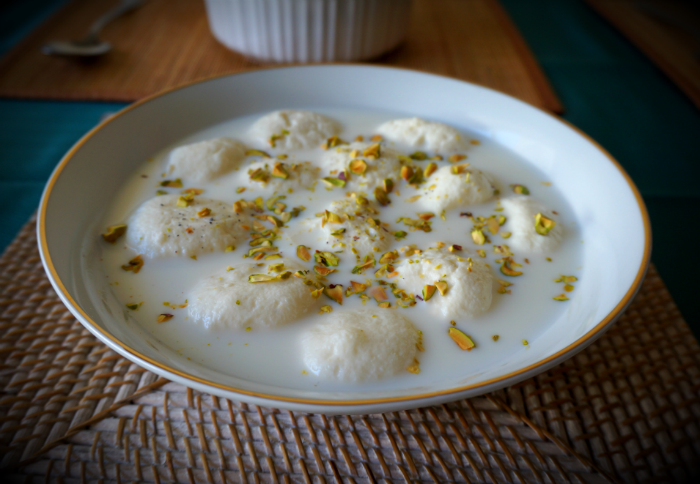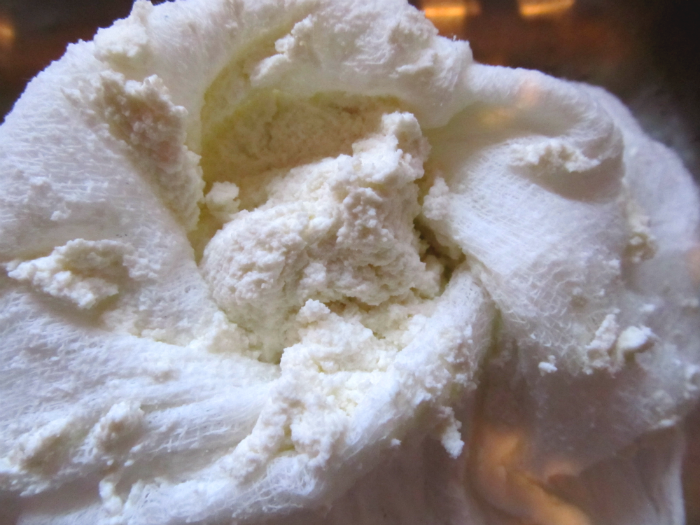
It’s been a little quiet around here friends, and I apologize for that. These past few months have been incredibly busy – filled with lots of celebrations and many more firsts.
Hubs and I are both June babies, and this year we celebrated my birthday with a trip to Disneyland. It was my first time there, but certainly not my last (much to my poor hubby’s dismay). Last month we also celebrated my one year anniversary of being in the Bay Area, and marked the special occasion by hosting our very first dinner party.
Today, I’m celebrating yet another first – my very first virtual Eid party! The lovely Sarah (of Flour & Spice) and Asiya (of Chocolate & Chillies) invited myself, as well as other fellow bloggers, to submit a recipe for their Eid Eats 2014 virtual potluck. I can’t begin to tell you how excited I am to participate!
When my brothers and I were growing up, my mom always went out of her way to make certain that Eid was a special time for us. Having to raise her children in a western society, this wasn’t always such an easy task. But my mother is a determined woman. Imparting the traditions and customs of her culture has always been an important aspect in rearing her kids.
Every year on the night before Eid (chaand raat), my mom wouldn’t sleep. She would pray and she would cook and then alternate between the two, taking a break here and there to clean. On Eid mornings, I remember waking to heavenly aromas that would waft from our kitchen and throughout the house. They would lead me to find mom rattling away, tending to seven or eight different items. I would be greeted with a great big hug, a sweet kiss to my forehead, a stack of new tablecloths and bed sheets to replace our everyday ones, and a peace offering of seviyaan (vermicelli boiled in thickened, sweetened milk. A little background on the peace offering: over the years I had managed to make it a tradition of arguing with poor mom over trivial things the night before Eid. This invariably would result in an angry fourfootsmall storming off to bed declaring that the world was against her. Oh, the chaand raat drama). The endless spread of food that festooned our table was always mind-boggling. Within the six or so hours in which the rest of her household slept, my mother would bustle away and have our table covered in everything from biryani, cholay, shaami kebabs, samosas, kachoris, to seviyaan, fruit trifle, and rasmalai. Although I have a soft spot for all of these mouth watering dishes, the last of them – rasmalai – has always been my very favourite.

So in the spirit of Eid and in an attempt to be as half as awesome as mom, I bring to you today my recipe for rasmalai. Rasmalai is a traditional milk based dessert that’s typically reserved for special occasions. It consists of soft balls of fresh, paneer that are nestled in a bed of thickened sweet cardamom flavoured milk, and dusted with crushed pistachios. It’s not a quick dessert to prepare, but it’s definitely not a difficult one either. As with all great things in life, it just requires a little time and patience. The end results are definitely worth waiting for!


- 1 litre of 2% or whole milk
- 6 T lemon, set aside in a small bowl
- pinch cardamom powder
- 4 3/4 cups water
- 1 1/2 cups sugar
- 1 litre of 2% or whole milk
- 2 T sugar
- pinch cardamom powder
- crushed pistachios for garnishing
- Slowly bring milk to boil in a large, heavy bottomed sauce pan. Stir continuously to avoid scorching.
- Once the milk has started to boil, slowly pour in the lemon juice. Take care not to pour all of the lemon juice at once; we only need enough to cause the milk to curdle.
- Once the milk has curdled, turn off the heat and remove the pot from the mixture.
- Pour the curdled milk into a fine sieve that has been lined with cheesecloth and allow it to drain for a few seconds.
- Run the casein (our paneer), under cold water to remove any trace of lemon.
- Squeeze out all of the water from the paneer by firmly grabbing at various sections of the cheesecloth. Be sure to squeeze out as much water as you can.
- Once the water has been strained, tie the paneer in the cheesecloth and place this on top of a colander. Take a heavy bottomed pan and put this on top of the cheesecloth. This is to ensure that we get out as much water as possible. Let this is sit for a minimum of an hour. I usually let this strain for at least 12 hours.
- After you've let the paneer strain for a few hours, place it on a clean surface and sprinkle with a pinch of cardamom powder. Knead this mixture until it is soft and the cardamom powder is incorporated.
- Roll the paneer into a log and portion off about 12 equal pieces.
- Bring water to boil over medium high heat. Pour in the sugar and allow it to completely dissolve.
- Once the sugar has dissolved, slowly add the paneer balls to the syrup, cover the pot and continue to boil for about 5 minutes.
- After 5 minutes of boiling, turn the paneer balls over and cover again. Boil for another 15 minutes.
- Once the paneer has boiled, turn off the heat and let the paneer balls rest in the syrup for about 15 minutes. Make sure to keep the pot covered during this time.
- Remove the paneer balls to a large bowl and slowly pour the syrup over them; allow this to cool.
- Once the paneer and syrup has cooled; you may cover with saran wrap and place in the fridge or continue to make the malai. At this stage, the paneer and syrup mixture is called rasgullay and can actually be eaten once chilled.
- In a heavy bottomed pan, bring the litre of milk to a boil. Stir constantly to avoid scorching and continue to boil until it has thickened and reduced to about half (this can take anywhere up to a half hour to do).
- Once the milk has boiled, stir in the sugar and cardamom and allow the sugar to dissolve.
- With a gentle hand, squeeze the syrup out of the paneer balls and place them into the milk mixture. The remaining syrup from the ras gullay mixture can be discarded, or a few tablespoons can be poured into the milk mixture for extra sweetness.
- Boil the paneer balls, uncovered, for about 5 minutes. After 5 minutes, turn off the heat and remove the pot from the burner. Allow the rasmalai to cool.
- Once the rasmalai has cooled, pour this into a large bowl and cover with saran wrap. Chill this mixture for a few hours.
- Garnish the chilled rasmalai with pistachios before serving.
- The paneer balls will double in size once they have been boiled. Rasmalai is best serve chilled. Enjoy!
